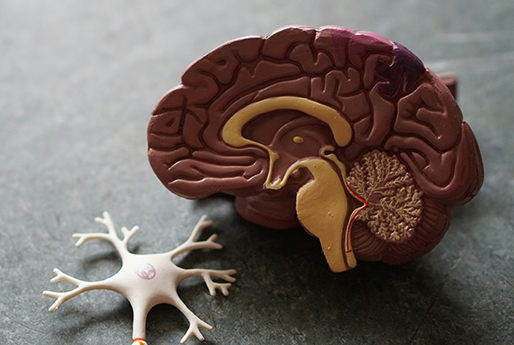주메뉴
- About IBS 연구원소개
-
Research Centers
연구단소개
- Research Outcomes
- Mathematics
- Physics
- Center for Underground Physics
- Center for Theoretical Physics of the Universe (Particle Theory and Cosmology Group)
- Center for Theoretical Physics of the Universe (Cosmology, Gravity and Astroparticle Physics Group)
- Dark Matter Axion Group
- Center for Artificial Low Dimensional Electronic Systems
- Center for Theoretical Physics of Complex Systems
- Center for Quantum Nanoscience
- Center for Exotic Nuclear Studies
- Center for Van der Waals Quantum Solids
- Center for Relativistic Laser Science
- Chemistry
- Life Sciences
- Earth Science
- Interdisciplinary
- Center for Neuroscience Imaging Research (Neuro Technology Group)
- Center for Neuroscience Imaging Research (Cognitive and Computational Neuroscience Group)
- Center for Algorithmic and Robotized Synthesis
- Center for Nanomedicine
- Center for Biomolecular and Cellular Structure
- Center for 2D Quantum Heterostructures
- Institutes
- Korea Virus Research Institute
- News Center 뉴스 센터
- Career 인재초빙
- Living in Korea IBS School-UST
- IBS School 윤리경영


주메뉴
- About IBS
-
Research Centers
- Research Outcomes
- Mathematics
- Physics
- Center for Underground Physics
- Center for Theoretical Physics of the Universe (Particle Theory and Cosmology Group)
- Center for Theoretical Physics of the Universe (Cosmology, Gravity and Astroparticle Physics Group)
- Dark Matter Axion Group
- Center for Artificial Low Dimensional Electronic Systems
- Center for Theoretical Physics of Complex Systems
- Center for Quantum Nanoscience
- Center for Exotic Nuclear Studies
- Center for Van der Waals Quantum Solids
- Center for Relativistic Laser Science
- Chemistry
- Life Sciences
- Earth Science
- Interdisciplinary
- Center for Neuroscience Imaging Research (Neuro Technology Group)
- Center for Neuroscience Imaging Research (Cognitive and Computational Neuroscience Group)
- Center for Algorithmic and Robotized Synthesis
- Center for Nanomedicine
- Center for Biomolecular and Cellular Structure
- Center for 2D Quantum Heterostructures
- Institutes
- Korea Virus Research Institute
- News Center
- Career
- Living in Korea
- IBS School
Research Centers
- Research Outcomes
- Mathematics
- Physics
- Center for Underground Physics
- Center for Theoretical Physics of the Universe (Particle Theory and Cosmology Group)
- Center for Theoretical Physics of the Universe (Cosmology, Gravity and Astroparticle Physics Group)
- Dark Matter Axion Group
- Center for Artificial Low Dimensional Electronic Systems
- Center for Theoretical Physics of Complex Systems
- Center for Quantum Nanoscience
- Center for Exotic Nuclear Studies
- Center for Van der Waals Quantum Solids
- Center for Relativistic Laser Science
- Chemistry
- Life Sciences
- Earth Science
- Interdisciplinary
- Center for Neuroscience Imaging Research (Neuro Technology Group)
- Center for Neuroscience Imaging Research (Cognitive and Computational Neuroscience Group)
- Center for Algorithmic and Robotized Synthesis
- Center for Nanomedicine
- Center for Biomolecular and Cellular Structure
- Center for 2D Quantum Heterostructures
- Institutes
- Korea Virus Research Institute
Uniquely Human Neural Circuits for Perception
Tel. +82-31-299-4400
Fax +82-31-299-4506
IBS Center for Neuroscience Imaging Research
#86364, N Center, Sungkyunkwan University, Seobu-ro 2066, Jangan-gu, Suwon, South Korea
Director

Director Hakwan LAU
Much of current neuroscience focuses on research in mice. And yet these animals lack parts of the brain that are prominent in primates (e.g. the granular lateral prefrontal cortex). It is commonly thought that these brain regions allow humans to think, to plan, and to use languages. But do we also experience the world differently from other animals? Understanding how humans may have unique capacities to perceive, e.g. to see things, to experience pain, may in turn inspire and inform developments of artificial intelligence models.
The Center for Neuroscience Imaging Research was founded by Director Seong-Gi Kim in 2013. In 2024, Hakwan LAU joined as a Co-Director. His role is to lead basic neuroscience research, to showcase the technological advancements in the methods of neuroimaging pioneered by the center. Co-Director LAU was born and educated in Hong Kong. He received his doctorate from Oxford University in 2005. Prior to joining IBS, he has been a faculty member at Columbia University, UCLA, the University of Hong Kong, and the Riken Institute in Japan.
Introduction

Currently, besides methods development, the Center for Neuroscience Imaging Research already has multiple sub-groups focusing on employing these methods for understanding basic brain functions. These studies focus on humans, non-human primates, as well as rodents. The topics of interest range from attention, affective processing, pain, models of neurological diseases, reward and reinforcement, high level cognition, etc.
In the coming years, we will focus on creating further synergy between the research sub-groups. There are unique strengths and weaknesses for research in each species, which complement each other. In humans, we can most easily relate to diseases for clinical impact. Humans are also capable of learning very complex cognitive tasks, in a relatively short time. However, invasive methods for precise measurements and causal manipulation of brain signals are limited. In mice, where these methods are widely available, they lack some brain regions and circuits that may be crucial for understanding essential cognitive and perceptual functions. Research in non-human primates is logistically challenging, and yet they can help bridge this gap in methods.
Perception, broadly defined (including pain, vision, understanding of scenes and social situations, etc), covers the varieties of expertise in the different research teams. We will focus on brain mechanisms that are potentially uniquely human. To understand these mechanisms, we will exploit the different methodological advantages from both human and animal studies.
Main research activities
"Progress in science depends on new techniques, new discoveries and new ideas, probably in that order." - Sydney Brenner, Nobel laureate
In the next few years we will focus on further growing our expertise in both human and animal research. Our goal is to showcase the pioneering methods of neuroimaging developed at the center, to demonstrate research in different species, including humans, are all necessary for tackling some of the most challenging questions in basic neuroscience today.
In humans we will develop methods for identifying neuronal circuits and tuning properties at the fine grained level. We will try to do this with non-invasive methods (e.g. fMRI). Because these methods are indirect, they will need to be validated also in animal models.
Neuroimaging is often thought of as a way to read out signals in the brain. However, under some conditions we can also use it as a tool for ‘writing’, i.e. for facilitating causal intervention. For example, advancements in machine learning technologies have allowed us to analyze brain data as soon as they are collected, in ‘real time’, during the experiment. We can immediately associate reward signals with observed patterns of brain activities, in order to reinforce their occurrence, or to further link them with other physical stimuli. Currently, this can already be achieved with fMRI, with which we focus on patterns of hemodynamic signals. We will refine this method of hemodynamic pattern reinforcement in humans, using 7T MRI. We will explore new analytic methods, and validate them in animal studies. These results will enhance our understanding of the underlying physiological mechanisms of the methods, to facilitate further developments.
With these tools, we will carefully compare how perceptual processes may differ between primates and rodents, given their differences in neuroanatomy and physiology. To facilitate this comparison we will also develop behavioral tasks to be conducted in parallel in different species.
- Content Manager
- :
- Last Update 2025-05-14 16:42











